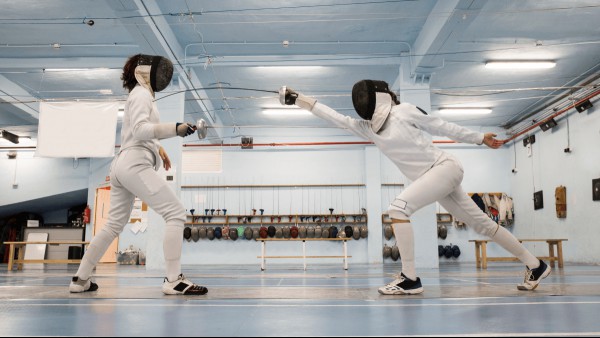Cześć! Have you made the brave decision to master the Polish language? Fantastycznie! Tackling this language, although challenging, is a lot of fun and is definitely a very rewarding experience. Here are my five best tips for learning Polish to help you on the first steps of your journey.
The Best Tips To Learn Polish
Remember That Everything Is Pronounced Like It’s Written
At first, this news might seem a bit alarming. Looking at the word zmartwychwstanie, you might feel your heart rate pick up. Polish, like other Slavic languages, is notorious for its love of consonant clusters. So do we really pronounce all of these letters? Oh yes, we do: [sma-rtvih-vsta-nie]. Easy! Zmartwychwstanie (literally “getting-up-from-the-dead”) is the Polish word for resurrection, which you might hear surprisingly frequently in the intensely Catholic country.
Unlike English (which is not phonetic and difficult to pronounce for learners), Polish words are always spelled and pronounced the same way. Once you learn which letters stand for which sounds, you will basically always know how to pronounce a new word when you see it — you will only need to put all of the sounds together.
This gets even easier once you realize that quite a few sounds are spelled with two letters: Cz, sz, rz, dż and ch are pronounced simply as [ch], [sh], [like the “s” in “pleasure”], [j] and [h], respectively. As soon as you know this tip, “Chrząszcz brzmi w trzcinie w Szczebrzeszynie” doesn’t seem as scary anymore, does it? Also, the name “Anna” is pronounced [An-na], not [An-a]. When you see a double consonant in Polish, you have to say the consonant twice.
As soon as you learn the fairly straightforward rules of Polish spelling, you will be able to predict how every new word is pronounced.
Keep Calm When Learning The Noun Endings
I’ll admit it now: Polish grammar can be quite daunting. If you wanted to describe Polish grammar in one sentence, you could say “Everything just keeps changing the endings,” and you would not be far from the truth.
For instance, if you, like myself, are a fan of the world’s largest rodent, you might one day say: Mam kapibarę (“I have a capybara”). But what about the opposite? Simple: Nie mam kapibary (“I don’t have a capybara”). “I’ll come with the capybara”? Przyjdę z kapibarą. “I’m talking to you about the capybara”? Rozmawiam z tobą o kapibarze. You get the idea.
If you are not a fan of memorizing grammar tables — which I totally understand — try to focus on learning full sentences and expressions instead. The weirder or more absurd the examples, the higher the chance that you will actually remember them (see what I did with the capybara?). Also, repeating the sentences out loud will help you memorize them faster. Instead of reviewing vocabulary in a library, try to go out for a walk with a list of words and sentences and say them aloud.
On a positive note: It could have been worse! Finnish and Hungarian have much more complex case systems. If you don’t enjoy learning Polish grammar, I strongly advise you to stay away from those two.
@babbel Around 40 million people speak Polish. Learn more Polish at the link in bio #learnpolish #learnpolishontiktok #polishlanguage #naukaangielskiego #naukapolskiego
original sound – Babbel
Work On Your DŹ, Ć, Ś And Ź
When practicing your Polish pronunciation, you should pay special attention to the letters with an additional accent on top. Those are among the most difficult ones for English native speakers to learn and pronounce. Cześć. Jeść. Źródło. Dźwięk.
Each of these sounds actually has two alternative spellings, either with the small line on top or with an additional I.
| With Accent | Example | With I | Example |
| dź | dźwięk | dzi | dziewczyna |
| ć | ćma | ci | ciepło |
| ź | źdźbło | zi | ziarno |
| ś | średnio | si | siedem |
The spelling with “I” usually appears in front of vowels and it marks a slightly softer pronunciation. The difference is small, so you don’t have to worry about it too much at the beginning. If you’re interested in this topic, you can find a good explanation of it here.
Every cloud has a silver lining: Once you’ve mastered these sounds, you’ll be more than halfway through to correctly pronouncing the sounds of Mandarin Chinese! Why not tackle two of the world’s most difficult languages at the same time?
Don’t Obsess Over Grammar (At First)
Polish grammar, while important, is not something that can be mastered quickly. After all, it is of one the main reasons why Polish tends to be included in the lists of the hardest languages for English speakers to learn. Challenge accepted! Fortunately, in most situations, you don’t necessarily need to use all the perfect case endings to make yourself understood. Don’t be afraid of making mistakes and focus on communication rather than striving for absolute flawlessness.
To stay motivated, I recommend that you prioritize learning new words and expressions over grammar. This may sound like a counterintuitive tip to learn Polish, but it’s not. When you focus on vocab and sentences, your Polish will gain momentum, and you’ll quickly be able to feel that you can say and understand more than you would if you spent all your time on grammar from the outset. And once you feel motivated and empowered, it will be easier to tackle the intricate maze of the seven Polish cases and five grammatical genders.
Immerse Yourself In Polish
The key factor when learning any language is having an environment where you can immerse yourself in it and use it — the more frequent, the better. Make sure to expose yourself to Polish in a variety of different ways. Check out your local Polish community and join their events. If you can’t find anything like that in your area, find a community online. Subscribe to Polish YouTube vlogs and keep watching their videos even if you don’t understand much of what they say (yet!). This will pay off in the long term, by improving your pronunciation and intonation.
A lot of people study Polish for heritage reasons. Does your grandma speak Polish? Do you have cousins or an uncle in Poland? Reach out to your long-lost relatives who will likely be happy to help you practice, and will definitely appreciate your efforts.
Whichever way you choose, good luck! Powodzenia! (And one last tip for learning Polish: You can’t thank somebody who wishes you luck in Polish. On the contrary, you have to reply Nie dziękuję [“I don’t thank you”] to make sure you don’t jinx it. You know, just to be on the safe side.)
This article was originally published on December 20, 2018. It has been updated.











